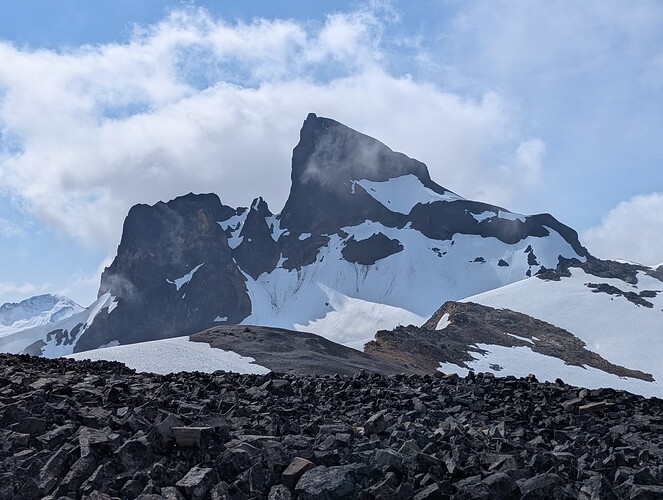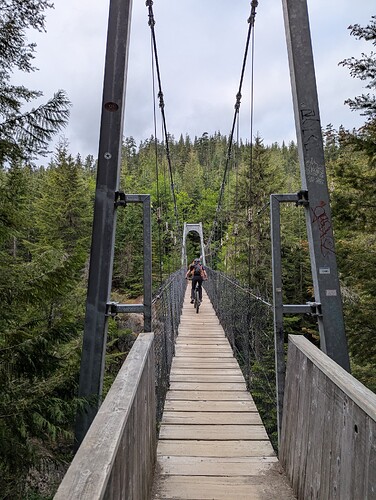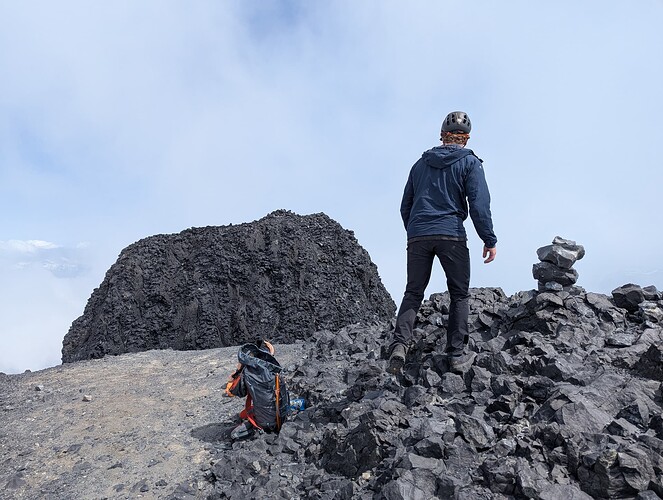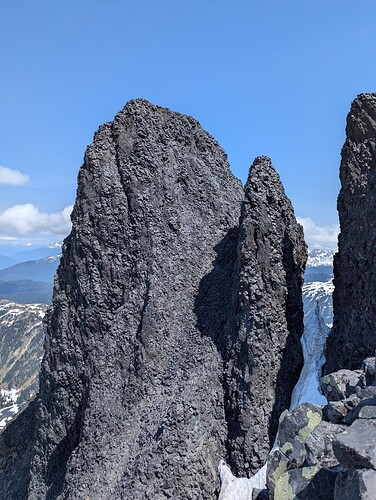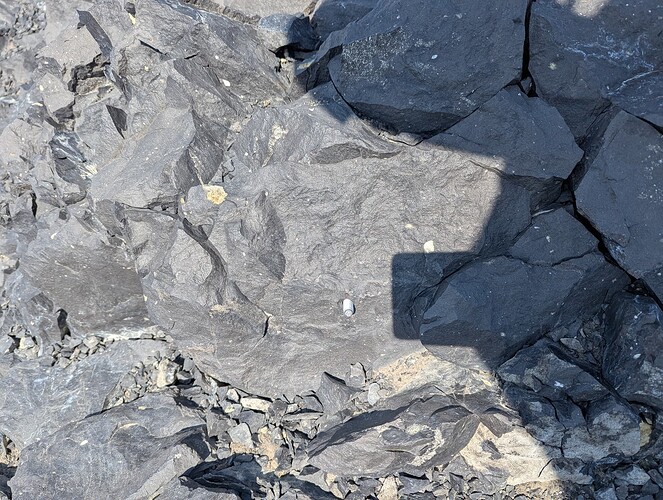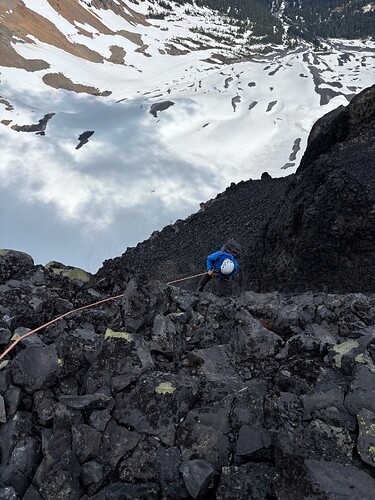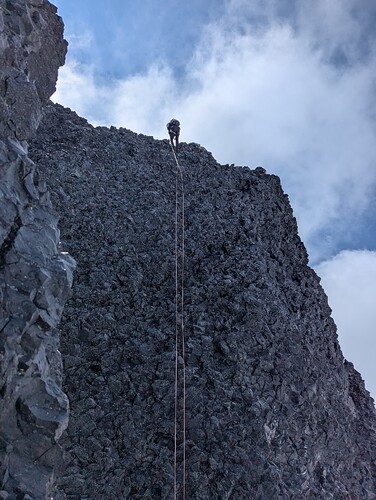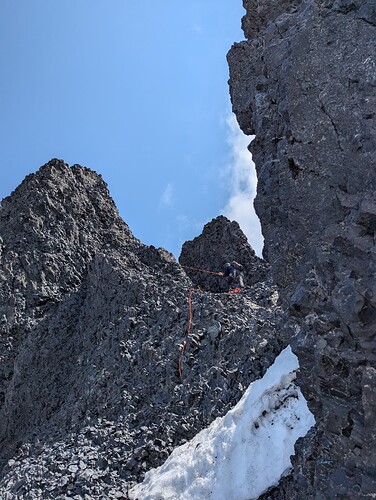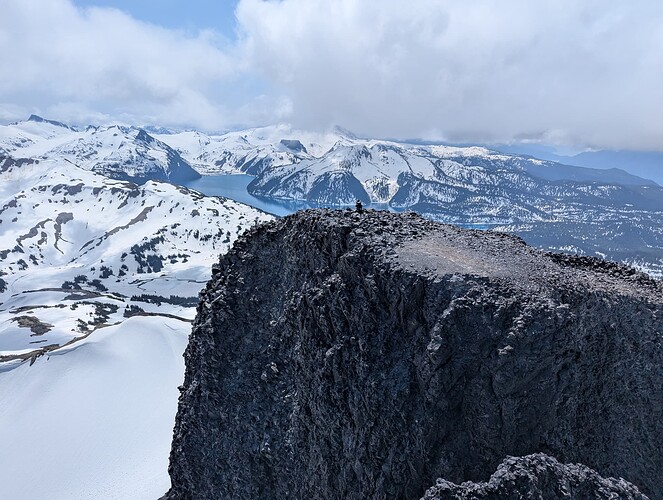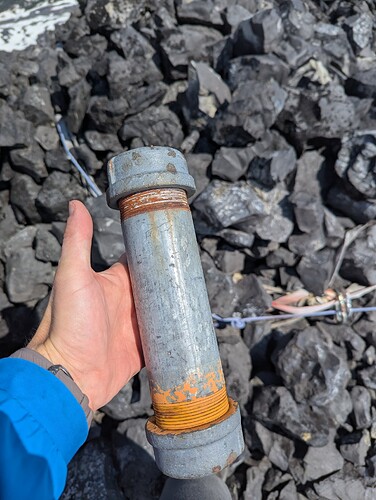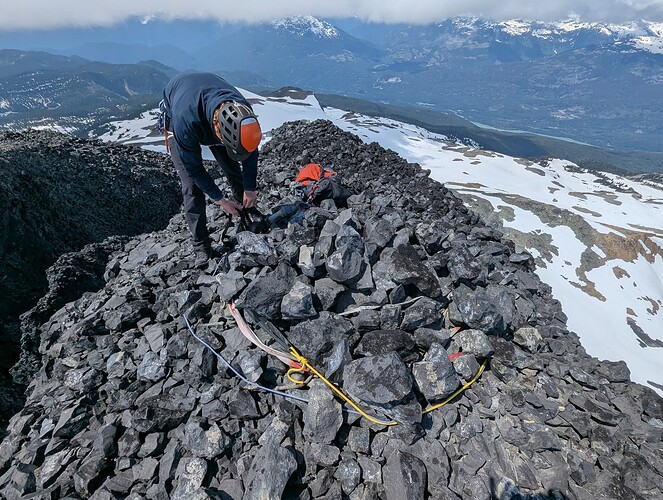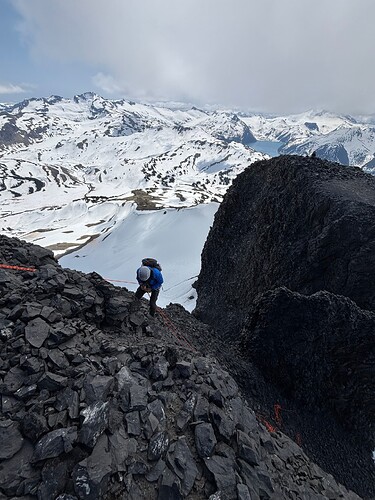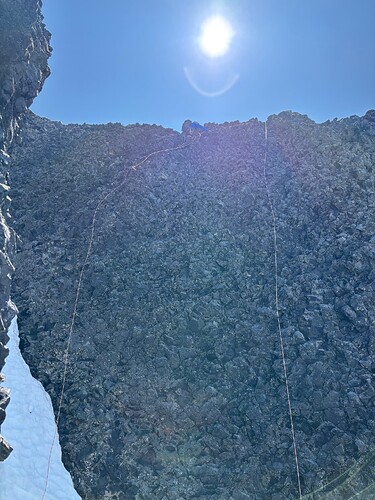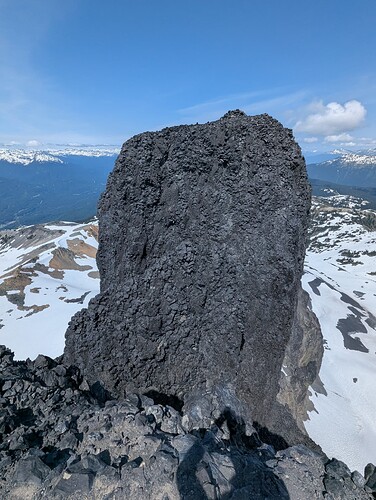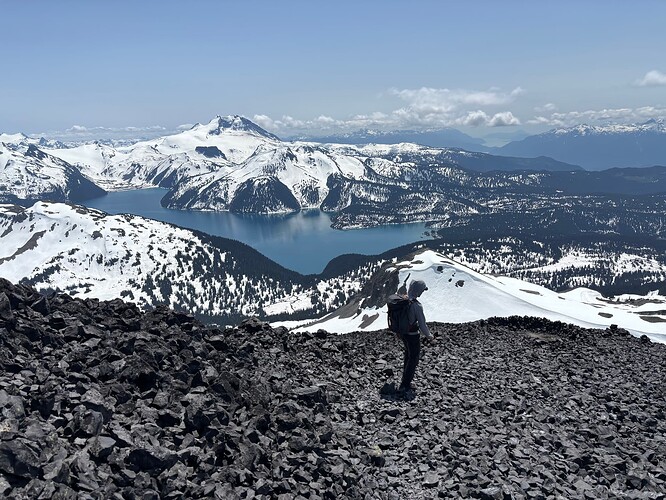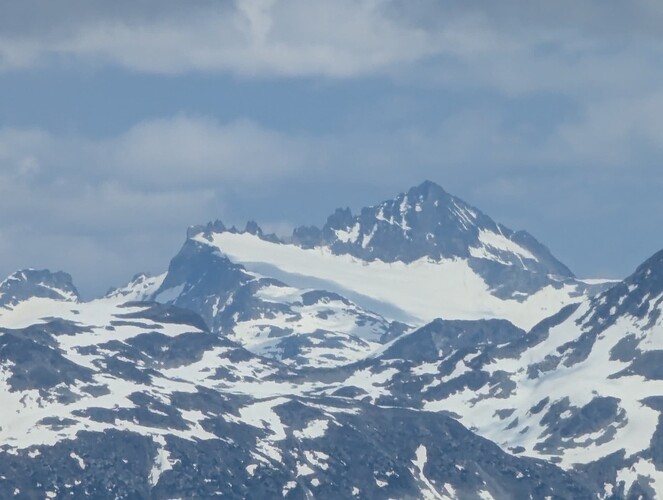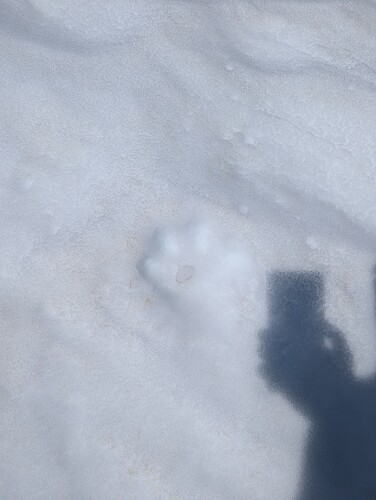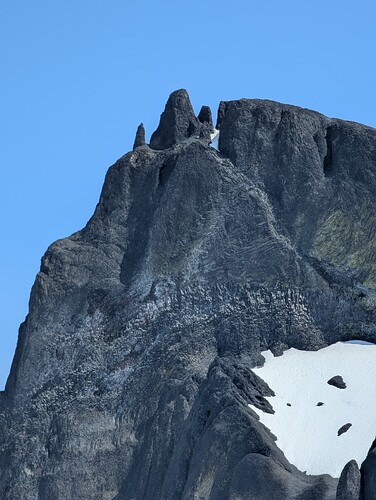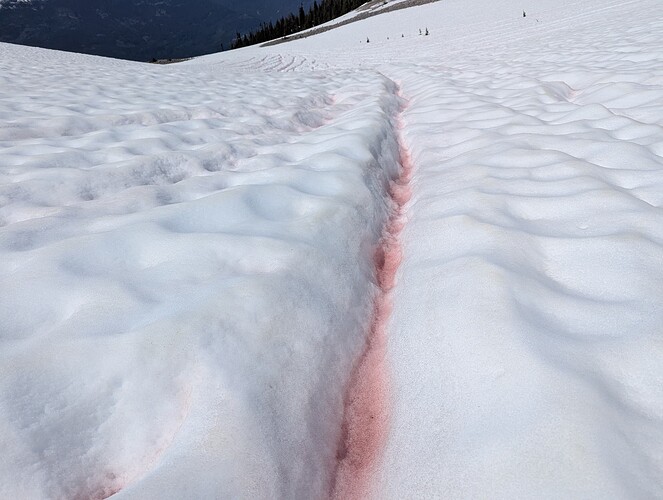I hiked the Black Tusk when I first moved here, and like most people, only made it to the false summit. I didn’t even realize there was a harder to reach true summit before I started the scramble. Seeing that crazy notch, I remember thinking that looked impossible, but after a few years of experience, including doing some chossineering on Meager, Fee, etc… I was itching to go back and try out the true summit. I had been up Rubble Creek too many times, and had earmarked the microwave tower road route as a good candidate for a bike and bag.
This Sunday, Francis and I both had: the day off, a yearning for something technical-ish, a reluctance to drive far. I suggested the Black Tusk true summit to Francis and he readily agreed.
He graciously picked me up in North Van around 0600h, and we drove straight up to Cheakamus Lake drive, which we found inexplicably gated 4.5km from where we intended to park. Slightly miffed, we reversed course and drove up the Cheakamus East FSR to at least reduce the extra distance by a few kms, knowing we could bike across the suspension bridge.
The road was generally not as bad as expected, but still sustained steep and rocky in places, and the ~12km and ~1000m of gain still did a good job jellifying the legs. We hit snow at 1600m, stashed the bikes, and booted up the firm snow past the microwave towers and onto a ridge leading to the bowl below the Tusk. Views were great with moody clouds swirling around the Tusk. Snow was hard enough that we put on our microspikes for one steep roll.
We then had the pleasure of ascending a couple of hundred meters up volcanic talus until we got to the base of the standard chimney scramble. Everything was snow free and dry here, and we jaunted up to the summit and took a proper look at the notch between us and the true summit.
The notch is deeper than it initially appears, with a small blade cleaving the centre of the angled notch, forming effectively two gullies that meet on the west side of the notch in a short, flatter ledge before a sheer drop. The discussion of what to use as an anchor began. Very interestingly, there were two bolts in solid-ish looking rock right by the high point of the false summit. However they had no hangers nor nuts - I would love to know the story behind their placement - perhaps installed for a rescue, but then partially cleaned to discourage people from venturing into chossland?
We ended up deciding that we wanted to aim for the flat bench at the bottom of the blade, where the two subgullies of the notch met, as that would allow us to scramble with minimal exposure up to the base of the true summit block fairly easily. We slung two boulders deadman style, and then buried them under a ton of other boulders, such that the slope was running away from the direction we’d be rappelling - the deadmen would have to be pulled uphill through the pile to come loose. We equalized them on a 240 and after some weight and pull testing, set up a 30m rappel with Francis’ 60m RAD line. I rapped first and then Francis followed into the notch. This rappel was probably ~20m. We left this rope fixed in case we wanted to jumar back up on the way out.
We then scrambled up to the base of the true summit block and found it honestly did not look that bad. Quite loose, and somewhat exposed, but not horrifically steep. We decided we were both comfortable to just scramble to the summit, and there was no need to pitch this out (any pro would be a performative anyhow). Francis led the scramble and we quickly were standing on the small flat summit.
We unfortunately couldn’t get the summit register open - it was rusted solid shut. The famous choss bollard was present, and indeed was more of a snow bollard type shape than the cairn / tower I had been expecting. The circumference is quite large, probably ~7m - make sure you bring lots of fresh rap material.
We added fresh material and spent some time reinforcing the bollard, then I again did the first rap back into the notch off of my 60m 8mm rope. I set off a small choss avalanche when I stepped on a rock and it disintegrated, and entrained a bunch more choss as it swept down the gully. If enough people climb the true summit, it will cease to be taller than the false!
Francis followed and pulled the rope. To regain the false summit, I was hesitant to jumar back up our fixed line. The last portion of the rappel had been overhanging, and the rock quality was very poor. I did not want to really be bouncing on the rope.
The rock more climbers left and higher actually looked of surprising quality, and had a natural rampy weakness in it, so I did put my traxion on the line for security, but scrambled up the second gully to gain the ramp. There was still the remnants of a snow finger in this gully, which actually provided a secure little moat between the snow and the rock that made for easy climbing. I kicked a few steps across the snow and then easily scrambled back up to the false summit. I then put Francis on top belay on both strands and he followed.
That was that, and the clouds cleared when we were back on the true summit as a nice treat - we soaked in the views for a bit, and then reversed course and hiked out. We saw some cougar prints in the snow by the microwave towers, which was quite interesting giving the recent activity that had closed Rubble Creek.
As per usual, the bikes made the deproach an absolute dream, and we flew down in about an hour.
Although I love my Squamish granite, the heart does yearn for a chossy adventure every now and then, and this was another great day bagging an ultra-iconic peak in the sea to sky.
